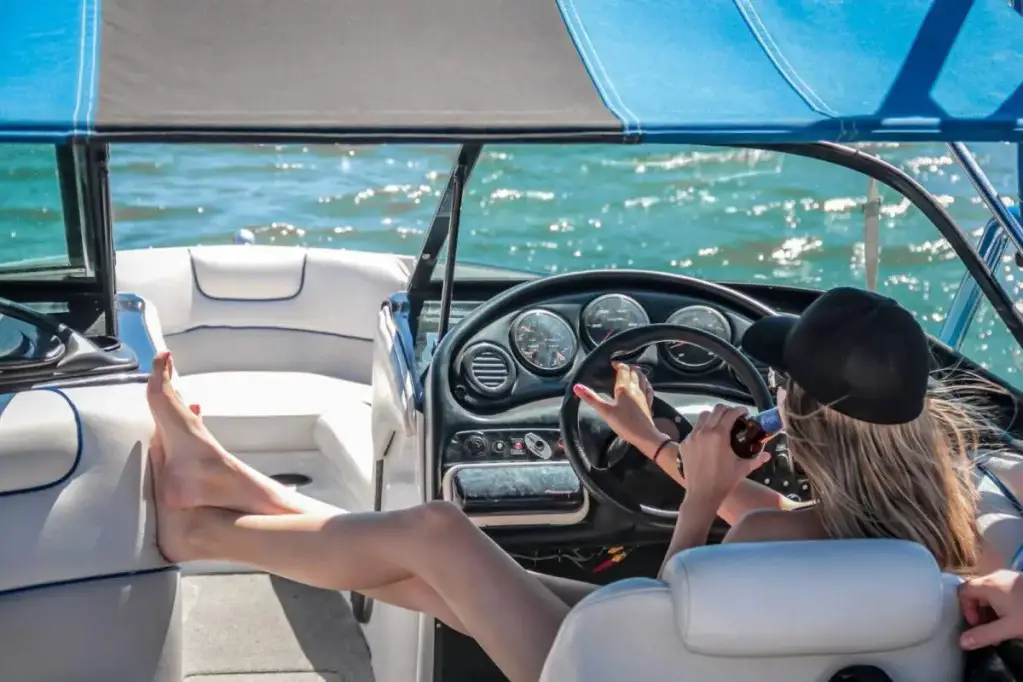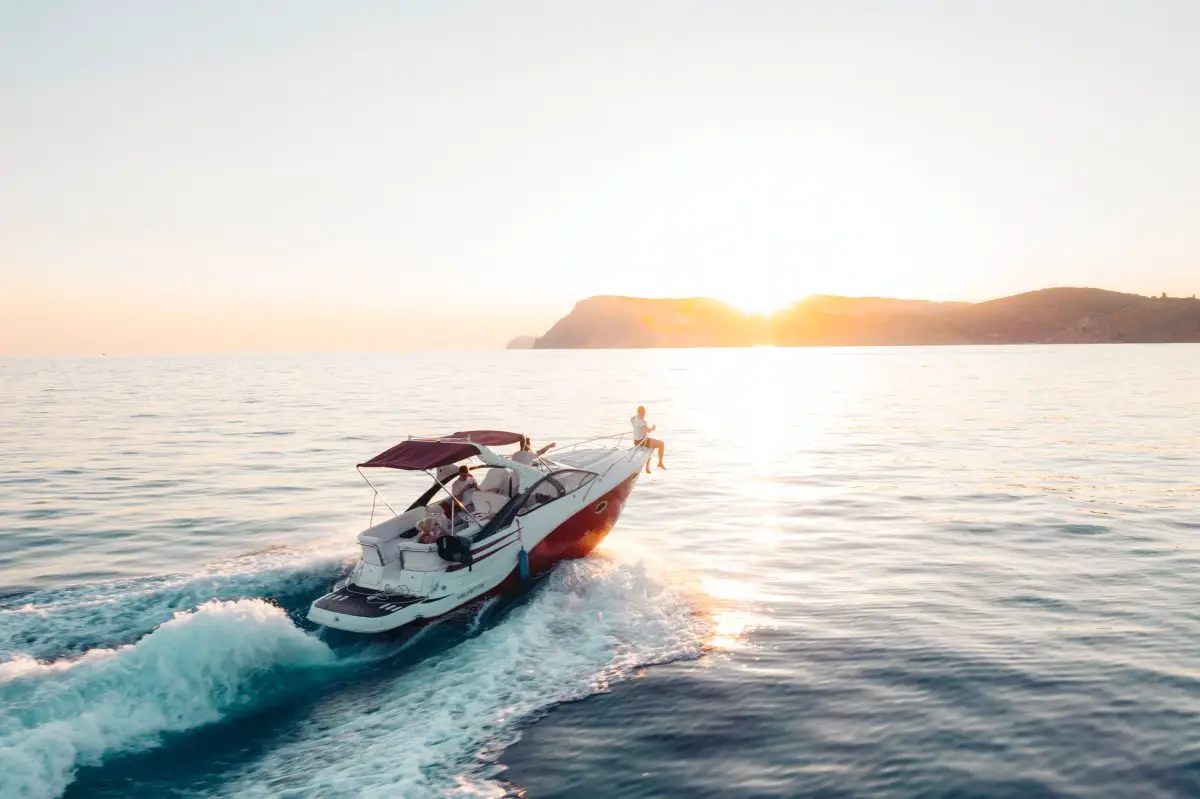Every avid boater knows that sweet feeling when spring’s back half brings the perfect weather for long days on the water with family and friends. The sun is shining, and you couldn’t be more excited to get on the boat and enjoy it. Whether you want to go fishing, skiing, tubing, or sailing, the same question applies: Is your boat ready for summer?
Table of Contents – Getting Boat Ready for Lake Season
Dock Box Storage

You also must give thought to storage both on and off the dock. This is where having a solid dock box is an excellent investment. However, having marine dock boxes is not enough; you need much more to ensure your boat is summer-ready.
There’s a reason boats are known as a black hole for money and why most people prefer to have a good friend with a boat than own one themselves. But with a bit of preparation, you can avoid the cost of an unexpected mishap and ensure your safety and that of your passengers.
Five Easy Steps to Get Boat Ready For Summer
Here are five steps to make sure your boat is ready to go before sunny and 75 degrees becomes a reality:
Step 1. Trailer Maintenance
- Tires – Check the suggested PSI and inflate all tires to the proper levels. Look for flat spots and inspect the valve stems for cracks. Don’t forget about your spare!
- Wheel Bearings – Depending on how long your trailer has been sitting, it may be time to grease the wheel bearings to ensure they’re ready for the road.
- Wiring – Check your left and right signals, brake lights, and taillights. Nothing will ruin your first sail of the year like getting pulled over for a broken light.
- Hitch – Make sure the ball, hitch, and safety chains are in good condition and don’t forget your locking pin.
- Winch – Confirm that the bow eye and winch aren’t worn. I double-check this one because the idea of losing my boat on the highway is a nightmare.
Step 2. Motor Checkup
- Lower Unit Lubricant – Assess the lubricant levels and ensure there is no moisture in the oil. I suggest changing it every 100 hours.
- Engine Oil – Make sure the oil is topped off. Always dip twice with the dipstick to ensure an accurate reading. The typical suggestion is to get an oil change every 100 hours.
- Trim/Hydraulic Steering Fluid – If you have these features, be sure to top off these fluids. Test the tilt trim multiple times and turn your steering from left to right to make sure it’s smooth.
- Motor – Flush your motor. If you don’t already own them, get a pair of earmuffs so you can run fresh water through the powerhead. Make sure there is a steady stream coming through the tell-tale. Give this a good 15 minutes.
- Visual Inspection – Give your motor a once-over. Keep an eye out for corrosion or damaged wiring. It may work fine at the moment, but anything that looks out of the ordinary could cause issues in the future.
- Filters – Check both hydraulic and fuel filters for clogs and leaks. Consult with Schroeder filter for size of replacements.
Step 3. Electronics
- Second Visual Inspection – Again, look carefully at your wiring and connections. Depending on how many add-ons your vessel has, this assessment can (and should) be time-consuming. Check your terminals and relays to ensure everything is tight, and there is no corrosion.
- Battery – Check both the voltage and the load your batteries can carry. The voltage may be acceptable, but your batteries can die and leave you stranded in the middle of nowhere two hours into your trip. I learned this the hard way.
- Charger – Depending on how you charge your batteries, there is a chance you could be getting a false reading. A blown fuse can make it look like your batteries are charging in half the time they used to. A multimeter can show you if this is accurate or not.
- Test Run – After you have charged your batteries, try everything to ensure it works. I run too many electronics, so if you are like me, you should start this process early.
Step 4. Legal and Coast Guard Compliance Check
- Certifications – If born after June 30, 1996, you need a boater’s safety course certificate in Michigan. This test is daunting and can take up to five hours, so determine whether you are required to have one in your state. A fishing license is also essential for anyone who is planning to fish. The old “I was the only fishing” when eight rods and five people on board didn’t work — trust me.
- Safety Gear –The list of essential boat safety equipment is long, so go through your boat and make sure you have everything you need and that it is easily accessible. Is there a life vest for everyone who will be on board? You might have a flare gun and fire extinguisher, but do they work? Depending on who is sitting at the ramp that day, the inspection could take five minutes or it could last for a full hour, so you might as well be thorough.
- Fine Print – Whether the game warden or the Coast Guard doing your inspection, they will want to see that you read and comply with every last requirement. There are rules you may not notice, like having your boat registration letters slightly spaced out from the numbers. Or maybe the length requirement for whatever fish species you are trying to catch just changed.
Step 5. External Inspection
- Hull Examination – This may seem obvious, but inspect your hull for damage or inconsistencies. If you have time, put it in the water before your first summer trip to ensure it floats. You did put the drain plug in.
- Recreational Gear – If you want to use your vessel for play rather than to catch dinner, is everything in working condition? Ropes, diving gear, tubes, skis — whatever activity you are planning, make sure you have everything you need before you get on the water.
- Hardware – Make sure all the parts and pieces your boat needs are secured, and there is no corrosion. Check your cleats, mounts, hatches, plugs, and rod holders. Is your boat ladder functional so you and your passengers can climb back into the boat after taking a swim?

Final Thoughts About Getting Your Boat Ready For Summer
I get it — you haven’t been on the water since last summer, and you want to load up the cooler and meet your friends at the ramp. However, having a “What’s the worst that can happen?” attitude is the quickest way to find out.
Thankfully, you have all of the information you need to prepare for your first summer outing, no matter what style of vessel you have, what activity you want to do, and what the water levels and weather forecast look like.
Take it from someone who has learned these lessons the hard way — doing things right the first time is the only way to go when it comes to boating. Do your research thoroughly, and then go out and have a fantastic summer on the water!
Related Reading To Get Your Boat Ready For Summer
How To Buy A Sailboat – 7 Aspects To Consider In 2023
Top 10 Lake Michigan Cruising Destinations
5 Essential Safety Tips When Boating & Fishing With Dogs
11-Point Checklist Of Sailboat Maintenance On The Great Lakes
Discover more from Thumbwind
Subscribe to get the latest posts sent to your email.




